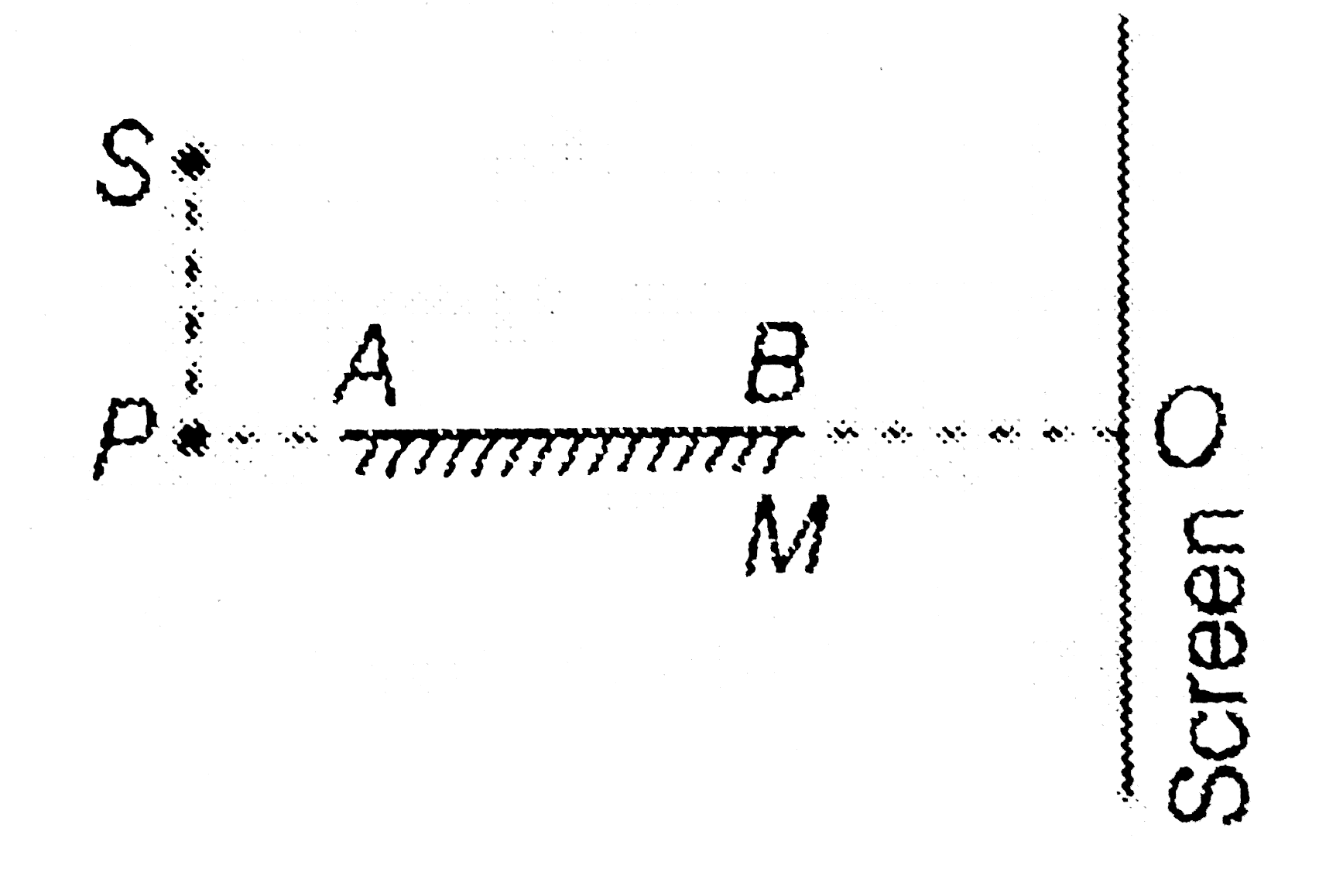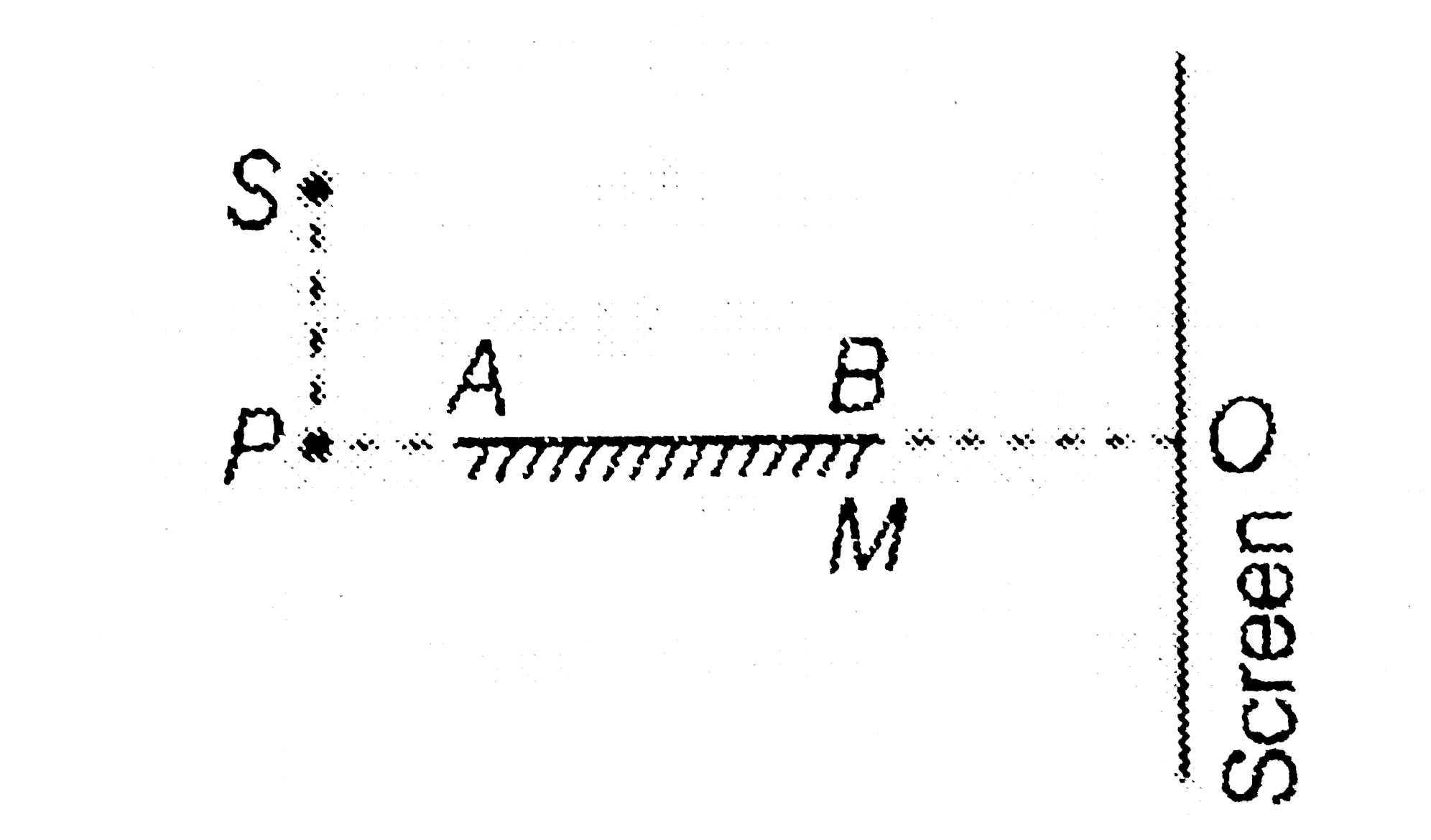A long narrow horizontal slit lies 1mm above a plane mirror. The interference pattern produced by the slit and its and its image is viewed on a screen ∑ distance 1m from the slit. The wavelength of light is 600nm. Then the distance of the first maxima above the mirror is equal to (d<<D) :

0.30mm
0.15mm
60mm
7.5mm
The correct Answer is:B
Point O is a minima Hence the maxima will be at y=β2 from O.
⇒y=λD2(2d)=600×10−9×14×1×10−3=0.15mm.
Topper's Solved these Questions
- BOOK - RESONANCECHAPTER - WAVE OPTICSEXERCISE - Exercise-2 (Part-2)5videos
WAVE OPTICS
- BOOK - RESONANCECHAPTER - WAVE OPTICSEXERCISE - Exercise-2 (Part-3)5videos
WAVE OPTICS
- BOOK - RESONANCECHAPTER - WAVE OPTICSEXERCISE - Exercise-1 (Part-2)13videos
WAVE OPTICS
- BOOK - RESONANCECHAPTER - WAVE ON STRING EXERCISE - Exercise- 3 PART I19videos
WAVE ON STRING
Similar Questions
A long narrow horizontal slit lies 1mmabove a plane mirror.The interference pattern produced by the slit and its image is viewed on a screen distant 1mfrom the slit .The wavelength of light is600nm.Find the distance of first maximum above the mirror.
View SolutionA long narrow horizontal slit is placed 1 mm above a horizontal plane mirror. The interference between the light coming directly from the slit and that after reflection is seen on a screen 1.0 in away from the slit, Find the fringe-width if the light used has a wavelength of 700 nm.
View Solution
Knowledge Check
- Question 1 - Select One
A long horizontal slit is placed 1 mm above a horizontal plane mirror. The interference between the light coming directly from the slit and the after reflection is seen on a screen 1 m away from the slit. If the mirror reflects only 64% of the light falling on it, the ratio of the maximum to the minimum intensity in the interference pattern observed on the screen is
A8:1B3:1C81:1D9:1 - Question 2 - Select One
In a YDSE, distance between the slits and the screen is 1m, separation between the slits is 1mm and the wavelength of the light used is 5000nm. The distance of 100th maxima from the central maxima is:
A0.5 mB0.577 mC0.495 mDdoes not exist - Question 3 - Select One
In a biprism experiment d=1mm. Interference fringes of width X=2.25 mm are observed on a screen at a distance of 3 m from the plane of the slit. The wavelength of incident light lies in the ____region.
AgreenByellowCredDviolet
The distance between the first and the sixth minima in the diffraction pattern of a single slit is 0.5 mm. The screen is 0.5 m away from the slit. If the wavelength of light used is 5000 Å. Then the slit width will be
View SolutionIn a Young's double slit experiment, the slit separation is 1mm and the screen is 1m from the slit. For a monochromatic light of wavelength 500nm, the distance of 3rd minima from the central maxima is
View SolutionIn a Lloyds's mirror experiment as narraow slit S iransmitting a light of wavelength λ is placed 3 mm above a small plane mirror ( as shown). The light coming directly from the the slit and that coming after the reflection interfere on a screen placed at a distance of 90 cm from the slit. Length of mirror is 2 mm and the middle point of mirror is 2 mm from point P.

If the mirror is shifted towards left then how does the fringe pattern on screen changes ?View SolutionIn a Lloyds's mirror experiment as narraow slit S iransmitting a light of wavelength λ is placed 3 mm above a small plane mirror ( as shown). The light coming directly from the the slit and that coming after the reflection interfere on a screen placed at a distance of 90 cm from the slit. Length of mirror is 2 mm and the middle point of mirror is 2 mm from point P.

If fringe width is 0.1 mm then what is the wavelength of light used ?View SolutionIn a double slit experiment, the distance between the slits is d. The screen is at a distance D from the slits. If a bright fringe is formed opposite to one of the slits, its order is
View Solution
